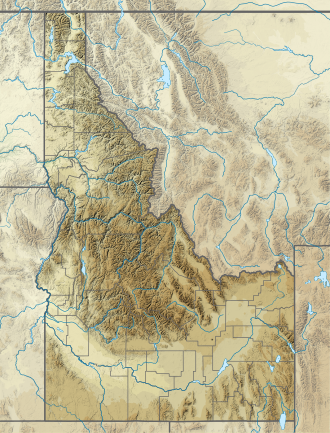| Sublett Range | |
|---|---|
| Highest point | |
| Peak | Sublett Range High Point |
| Elevation | 7,492 ft (2,284 m) |
| Coordinates | 42°22′12″N112°55′50″W / 42.369989°N 112.93057°W |
| Dimensions | |
| Length | 55 mi (89 km)N/S |
| Width | 33 mi (53 km)E/W |
| Area | 886 sq mi (2,290 km2) |
| Geography | |
| Country | United States |
| State(s) | Idaho, Utah |
The Sublett Range is a mountain range in Idaho (~94%) and Utah (~6%) in the United States, spanning Cassia, Oneida, and Power counties, Idaho and reaching into Box Elder County, Utah. [1] [2] The Phosphoria Formation reaches its greatest thickness beneath the mountains. [3]

